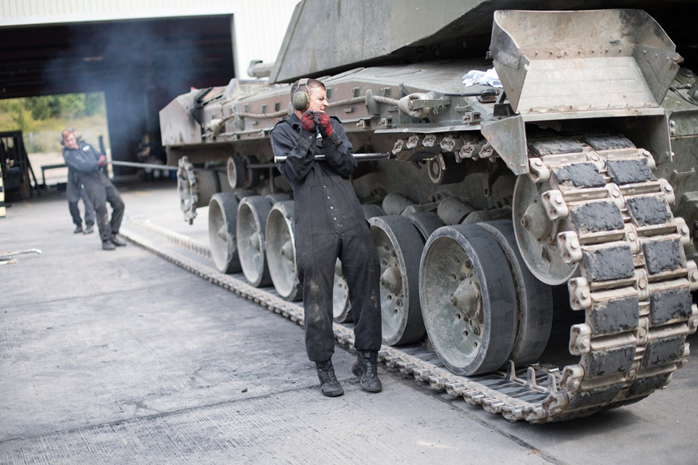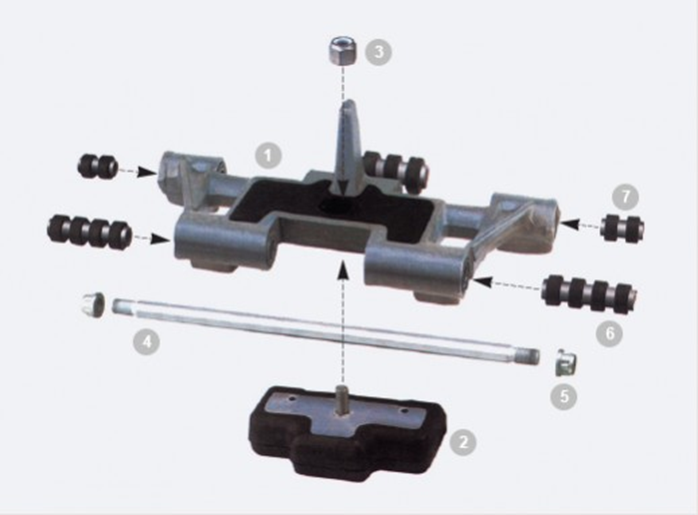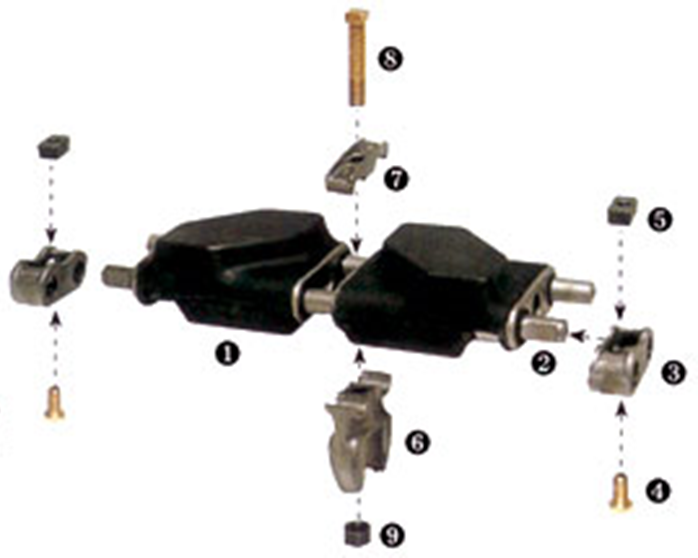Part 7 of my Running Gear series, today looking at track types. The series is looking at all the bits of tracked vehicle mobility and started here ( https://bit.ly/30596QZ ) if you want to follow the threads. Hope its interesting.
Usual disclaimer - this is Twitter, I don’t have much space and so some things are simplified or omitted for simplicity. This is a hugely complex science; I’m just giving a flavour of the considerations inherent in AFV design. With that out the way…
Track comes in two flavours – single pin and double pin. Broadly speaking, double pin is the contemporary norm for most of the world, though there are plenty of single pin examples in service, especially in Russia where two pin is relatively new still
Single pin track links have lugs at each end which interface with neighbouring links. Once aligned a pin is inserted laterally and forms the hinge between the links. Simplistic forms of this link literally just have a dry metal pin, with obvious heat and wear issues involved
Stretch is managed by track tensioning, but when adjustment limits are reach the track must be broken and a link removed, which is an odious task for the crew. Links utilising dry pin connections lie flat when placed on the ground, and are referred to as dead track.
The alternative to a dry pin connection is to use rubber bushings. These go into the lugs, and typically have a hexagonal hole through them. The pin is also hexagonal, ensuring that rotational movement is shearing on the rubber rather than the pin
To mitigate some of the stresses and wear on the bushings, the track can be preset to naturally align at an angle half of that required to go around the sprocket or idler. This causes the track to curve in on itself when laid flat, and is referred to as ‘live track’
As mentioned in Sprockets thread ( https://bit.ly/3jkqCK3 ), drive is imparted to single pin track via holes in body of the link. Friction between sprocket & track during engagement & disengagement is v high and a limiting factor of track life, requiring robust & heavy link bodies
Weight capacity limitations of the bushed single pin concept lead to the development of a better solution – the double pin track. In this design the pins are part of the link itself, with one on each side at each end of link, for a total of 4 per link.
Links are coupled to one another with a connector, which can be removed to swap out links without having to hammer through a pin. As the bushes are doubled, the movement within them is roughly halved, reducing wear and extending life
Drive is imparted to the links via engagement with the connectors not with the track link body. This allows connectors to be replaced when worn rather than entire link and means that the body can be made from a lighter material, saving up to 30% weight
There are drawbacks. The higher number of rubber connections means the track stretches far more, requiring much more tension adjustment to avoid a tendency to jump the sprocket teeth. They also weigh and cost more, but do have longer lifespan
A technical consideration is that the double pin design has a pin bending force exerted that isn’t present on single pin designs, and excessive damage to the extremity around the connector can cause a failure and require full link replacement
Note Russia evolved to something different to the normal approaches above. They long used single pin track with rubber bushing; however sprocket engagement is at the ends of the link and superficially look like double pin track. More often they use double pin now
When the US Army moved from single T157I to double T161 pin track on the Bradley the useful life doubled, as well as single pin issues like a pin mitigation failure not being a factor in double pin designs.
And that’s track links, though more to be said around construction, materials etc another day. Next in the running gear series will be track furniture – grousers and the pads. /end #miltwitter #tanktwitter #AFVaDay

 Read on Twitter
Read on Twitter















